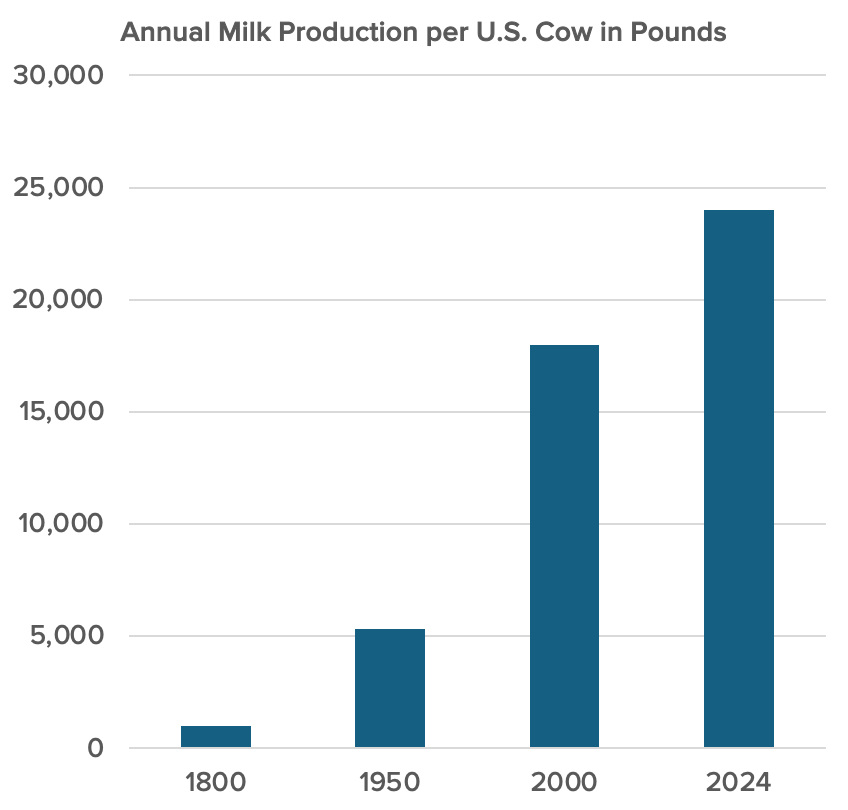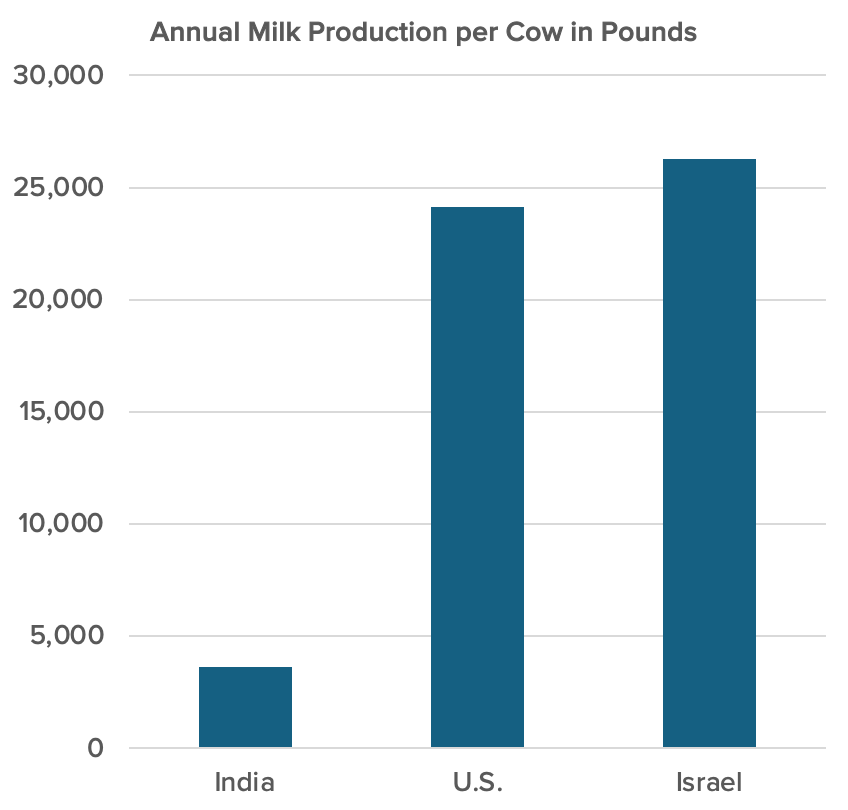In 1800 milk cows in the U.S. were producing around 1,000 pounds of milk a year. By 1950 it had increased to around 5,314 pounds. From 1950 to 2000, production increased to 18,000 pounds. Milk production then increased by 33 percent from 2000 to today with production per cow over 24,000 pounds. Milk cow productivity has been growing around 1.2 percent a year.
Not only do cows produce much more milk, they use much less land, water, and fuel. The American Dairy Association notes that from 2007 to 2017, U.S. dairy farms used 21 percent less land, 30 percent less water, and 20 percent less fuel.
The most productive cows on the planet are actually in Israel, which has led the world in milk per cow production since the 1990s. Today, the 115,000 cows in the national herd produce an average of 26,288 pounds of milk a year. Michelle Ackerman notes that:
Much of the genetic base for these cows traces to cattle purchased from the United States in the early 1950s. By breeding the American Holstein-Friesian to the local cow, the Israelis developed a bovine suited to their region. By taming their environment, they created an oasis in a desert. And by working together and sharing information, they developed tools that advanced the Israeli Holstein to world leader status.
For a fascinating look at Israel’s stunning rise and leadership in global innovation you can read George Gilder’s book The Israel Test: How Israel's Genius Enriches and Challenges the World. Watch a nice C-Span interview with George here.
The largest producer of milk on the planet is India with around 24 percent of world production. India gets its milk from both cows and water buffalo. Milk production from cows in the U.S. and India is similar at around 113 million tons. But India has over 6.5 times more cows than the U.S. (1.5 million versus 9.4 million). Cows in the U.S. are producing 24,117 pounds a year versus 3,642 pounds in India. Compared to Indian cows, U.S cows are 6.62 times more productive and Israeli cows are 7.2 times more productive.
India doesn’t need to invent new cows, it needs to follow Israel’s example and start innovating. India could enjoy much greater dairy abundance by acquiring the knowledge the Americans and Israelis have discovered and are willing to share.
You can enjoy our new course on the Economics of Human Flourishing at the Peterson Academy.
We explain and give hundreds of examples why more people with freedom means much more resource abundance for everyone in our book, Superabundance, available at Amazon.
Gale Pooley is a Senior Fellow at the Discovery Institute and a board member at Human Progress.









This is progress, but very much not for the cows.